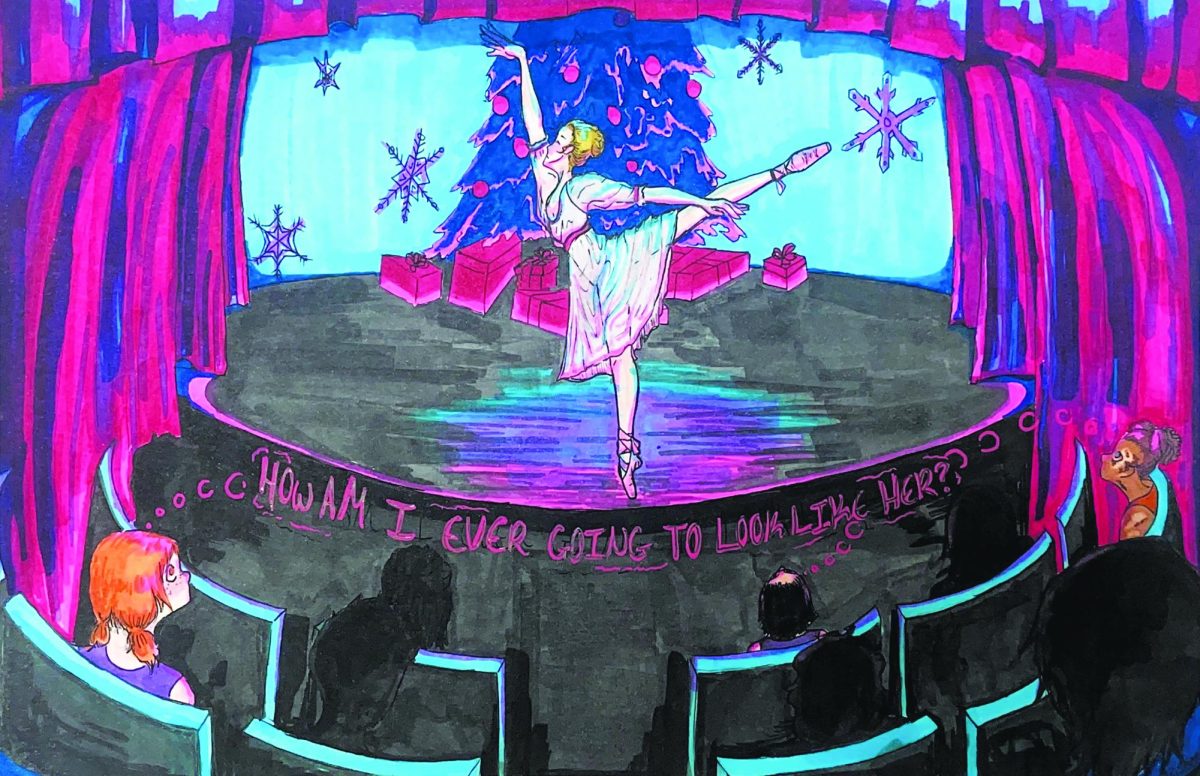Dance can be a truly wonderful thing
It is an art form, extremely entertaining to watch and usually very impressive, especially at a professional level.
It can be a great place to build friendships and bonds all while expressing creativity and exercising.
However, dance also has its fair share of complications just like every organized sport. There are many issues surrounding body image and an almost cut-throat competitiveness that are unique to the dance world, particularly in ballet.
These stereotypes stem from hundreds of years of history and dance culture as a whole, which is promoted by modern professional dance companies.
Negative body images in dance mostly spur from the fact that there is a notable “ideal” body type for ballerinas. Tall (but not so tall they tower over male dancers in their pointe shoes), short torso, long limbs and neck and lean with absolutely no curves. It is not easy or usually healthy for dancers to obtain this body type.
According to registered dietitian and nutritionist Rachel Fine, some dancers also face body image issues due to the dress that ballerina’s wear.
Ballet dancers wear tight-fitting leotards and tights during practices and rehearsals. They also attend classes and rehearsals in a room that usually has a large mirror spanning across the front.
Dancers who are up against impossible body standards are put into tight-fitting outfits and then have to stare at themselves and others in the mirror for hours on end.
Just think about that for a second. Leotards and dance costumes, in general, tend to still not be made for those who may not have that “ideal” slim, no-curve body.
Dance is also almost always a silent competition.
Unlike in other sports where the team is united for a common goal, to win, dancers in a professional company are constantly vying for the top spot as prima ballerina.
While the conditions are almost never as exaggerated as in movies like “Black Swan,” there is usually an underlying tension when dancers want to audition for the same role. Their peers that they share the stage with become their competition.
And if they think the best way to secure that lead role is to “look the part,” who’s to say what they may put themselves through to reach that standard?
As awareness of these issues continues to become more prominent over the years, there has been improvement in the stigma around not having the “perfect” ballet body. People are starting to point out the fact that in order to be a strong, healthy dancer, strict diets and extreme exercise regimens can do more harm than good.
However, in the dance world, most dancers continue to be aware of the fact that the top dancers still usually fit this stereotype. Change is happening, but at a much too slow pace.
Social media has contributed to widespread dance videos of dancers showing off their latest combination.
This can be a good thing, as it allows people to share their passion and find those who share a love of dance.
But, as most people understand, social media can also set high, unrealistic expectations, and not just surrounding body image.
A dancer may post a video of her effortlessly completing a complicated turn combination, but leave out the seven takes it took to get that video. This can lead to dancers believing in a perfectionist culture.
Maybe they begin to think that they are less, or even that something is wrong with them because they cannot nail a new move on the first try.
Maybe they can overwork and stress their bodies desperately trying to reach that professional standard when they are too young or simply not ready.
And if a young dancer is overworking their body to master a move, while possibly practicing unhealthy eating habits to reach what they see as the body standard, the consequences can be devastating.
Changes need to be made. The professional dance culture needs to stop promoting these dangerous body standards that can take away from everything that is bright and positive in the world of dance.
Professional dance companies set unrealistic standards
By upholding extreme body standards, professional dance culture can promote issues with body image both in the professional and recreational dance world. Young dancers often compare themselves to what has long been considered the “ideal” ballet body, which can lead to them practicing unhealthy habits.
0
More to Discover
About the Contributor

Melanie Vincent, Features Editor







